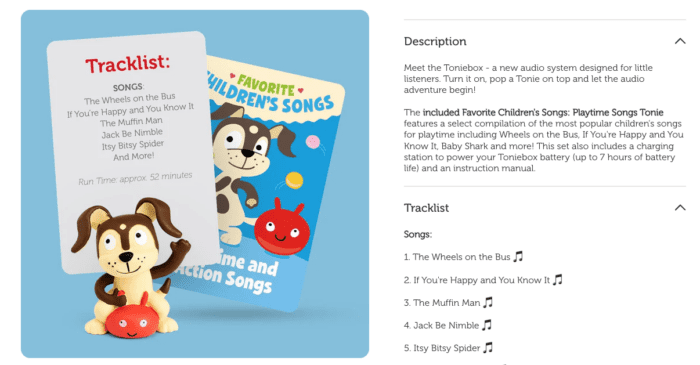Table of Contents
** Minutes
What is a product description?
5 tips for writing the best product description
Examples of great product descriptions
Product description templates to write your own product descriptions
Creating product descriptions for your ecommerce online store is a balancing act. You want to provide enough information to shoppers to answer any potential questions they might have, but you also need to keep in mind the idea of attention economics: human attention is a scarce commodity.
So how can you make sure that you’re giving customers both the right quantity and quality of information on your ecommerce site? Keep reading to find out.
Jump to the Product Description Template!
What is a product description?
A product description is the marketing copy used to explain what a product is and why a shopper should buy it. Product descriptions are important because they provide information about the product, how it should be used, why the customer should buy it, why it’s different than competitors’ products, and more.
An ecommerce sales tool
Your product descriptions can act as a valuable sales tool for your business by helping you directly target your ideal customers. Take time to evaluate how you want to come across. Make sure that your copy is error-free to establish trust and credibility. Like a good sales pitch deck, the product description should capture the tone and personality of your brand and the products you sell to help you connect with your target audience.
Describe product features and benefits
Good product descriptions should cover two main aspects: features and benefits. These are the bread and butter of your product page copy. A product’s feature is a quality or a function of a product. For example, “This laptop bag is waterproof.”
A benefit is the value a customer gets from a feature of the product. For example, “You won’t need to worry about the rain anymore” describes a benefit of the product.
Be as specific as possible with your product copy and make sure you are clearly describing features and benefits. Don’t just say a product is high-quality; let shoppers come to that same conclusion through the product features and benefits laid out in the description.
5 tips for writing the best product description
Your product descriptions need to do more than just describe your products — they need to sell them. Here are 5 tips for writing product descriptions that increase sales.
1. Know your audience
First and foremost, you can’t appeal to your audience unless you understand them. Focus on the buyer persona of your ideal customer and sell to them, rather than trying to please everybody.
- Who is your ideal customer?
- What are they looking for in a product?
- What’s important to them?
For example, ShipBob customer, Beachwaver Co., targets customers that want to achieve beautiful hairstyles with ease. Here’s how they connect with their customers through a product description, followed by a list of product details:
“Why You’ll Love It: Get loose beachy waves or a beautiful blowout with the touch of a button.”

This description speaks directly to their ideal customer. The casual tone is consistent with the overall image of their brand, which is educational and informative, but laid-back and friendly. It’s important to let your brand voice shine through in product descriptions.
A helpful trick: Imagine that you are a sales associate at a brick-and-mortar version of your store. Which tone of voice would you use with customers? What kind of language? That’s the tone and language you should use for your product descriptions.
2. Paint a picture
The best way to present the benefits of a product is to use descriptive and vivid language to paint a picture in the customer’s mind. After all, when someone is online shopping, they aren’t able to look at or touch the item in person, so your product description should help bridge that gap. In fact, research shows that 88% of shoppers characterize detailed product content as being extremely important.
That doesn’t mean that you need to present a detailed list of technical specs and call it a day. Instead, make sure that you are not only presenting key selling points but the experience and/or desirable outcomes created by the product.
To do this, make a list of all important product details or features. Then, figure out the benefit each item provides to the customer. All key features should have a benefit, whether it’s utility, aesthetics, comfort, or simply fun.
Finally, use descriptive language to explain these benefits to your customers. Help them imagine what it’s like to experience your product.
For example, ShipBob customer, Cowboy Colostrum describes their product this way:

From this vivid description, customers don’t just get an understanding of the benefits of the product, but also how experiencing those benefits will feel.
You should aim to conjure a similarly vivid image related to the product that you sell.
3. Format strategically
Reading on screens has altered the way people consume written content. As mentioned above, shoppers’ attention is a scarce resource, and you need to make the most of the time you have with a potential customer — especially because people only read 16% of the content on any given web page.
According to literacy experts, skim reading is the new normal. That is why it’s so important to make compelling product descriptions easy to digest.
Here are some formatting tricks to grab — and keep — shoppers’ attention for better conversion rates:
- Create scannable lists with bullet points
- Use high-quality, eye-catching product photos
- Add power words to your product titles, headings, and subheadings to break up blocks of text
- Make use of short paragraphs for effective product descriptions
- Increase your font size for easier reading
- Include plenty of white space
- Place lengthy technical details behind a cut or in a different tab
4. Leverage social proof
Social proof gives your products and business added credibility: 55% of shoppers say that online product reviews influence their buying decision, while 72% of buyers will take action only after reading a positive review.
If potential buyers are on the fence about whether or not to purchase your product, showing reviews from other customers can be the difference between them submitting an order or abandoning their cart. In fact, 72% of buyers will only take action after reading a positive review.

Take ShipBob customer Our Place, for example. Right under their product description, they showcase a list of reviews from customers who have already purchased (and loved) the product.
Customer reviews are a great way to show social proof and let someone else’s word help do social commerce for you, but they’re not the only way. Many clothing retailers, for example, ask customers to share photos of themselves wearing the clothes in their daily lives. Like the point above, this helps customers imagine wearing or using the product in their daily lives.
Some retailers also share purchase stats about a certain product, with messages such as “Over 1,000 sold!” or “Viewed by 65 shoppers today.” The latter also adds a sense of urgency; since many people are interested in an item, there’s an increased chance that it may sell out soon.
5. Have high-quality product images
According to Baymard, 56% of users’ first action upon arriving on the product details page is to explore the images. No matter how great your product description is, if your product images are blurry, unclear, or unflattering, it’ll be hard to persuade the customer to make a purchase.
That is why investing in professional, high-quality product images is so important, or at least learning how to unblur an image and using tools for sharpening images, etc. Enable the option to zoom in on any image, and provide as many different angles of the product as possible. Similarly, show the shopper a photo of each colour or style you offer. If you’re selling clothing, shoes, or accessories, show what each variation of the product looks like on someone.
This may sound like you’d end up with too many photo variations, but providing customers with as much visual information as possible is key to convincing them to buy — especially if they’re only skimming your written descriptions.
Examples of great product descriptions
Here are some examples of product descriptions that meet all of the above criteria — and then some:
Tonies
Children’s toy, Tonies, is a unique product that is different than anything else on the market.
On their site, they have a “How It Works” section to ensure potential customers understand what their product is, how it works, and the necessary terminology.

Once you begin ordering a Tonie, you’re given another product description for further clarity about the product and why it is an educational, yet entertaining child’s toy.

Baby Doppler
Baby Doppler is a fetal heart rate monitor that allows moms-to-be to listen to their baby in utero. Here’s how they describe their product:

Baby Doppler does a great job of providing details about the product, educating the shopper, sharing the product’s uniqueness, stating the benefits it provides the customer, and playing into an emotional connection.
Plus, right at the top of the description is a link to TrustPilot so shoppers can navigate to the site and see customer reviews.
Optimise product descriptions with these templates
When trying to craft the perfect product description, you might struggle with writer’s block. We’ve got you covered with the following templates.
Inspiration for writing your product descriptions
If you’re feeling stuck, use these guidelines to create your product description:
- Create an attention-grabbing headline that hooks your audience – Use snappy adjectives to excite shoppers and set your product apart from competitors. You can use major differentiators to grab attention.
- Use a short description paragraph to introduce the benefits of your product – This is your opportunity to really influence the shopper and convince them why they need your product. Showcase how your product can help them and improve their life.
- Add a bulleted list of product features and the benefits they provide – Use a short list (include icons if you can, for a visual element) so shoppers can scan the product page for need-to-know specs.
- Include any necessary technical details – Technical details like size, material, and fit (if applicable) to your product page should be added to help customers have a seamless online shopping experience and ensure they’re happy when their purchase arrives at their door.
- Highlight social proof – Show your positive reviews on your product page to build trust.
- Conclude with a call to action – Once the customer has thoroughly vetted your product on the product page, give them a CTA so they’ll take action. This can be in the form of an “Add to Cart” button or better yet, “Buy Now.”
This template can be customised to nearly any product in nearly any industry — just make sure that you’re highlighting your brand’s personality, using clear and descriptive language, and writing with your ideal customer in mind.
Example: clothing product description template
Clothing descriptions require a little extra heavy lifting. Shoppers don’t have the luxury of trying on your products in-store, so you’ll need to get as close as you can get to a home try-on through words alone.
In addition to the template above, include the following:
- Item measurements (ex: length, inseam, etc.)
- Information about the model’s height and clothing size
- Whether your clothing runs small, large, or true to size
- Details about the product
- Care instructions
- Material
Clothing product pages are also a great place to advertise matching accessories or shoes as “related products.” This can increase your average order value by encouraging customers to order a complete outfit as opposed to just one piece.
Conclusion
By following the tips and templates above, you’ll be well on your way to creating product pages that inspire customers to purchase from your ecommerce store. When shoppers can’t physically interact with your products, connecting with them via language and photography can mean the difference between online window shopping and making a purchase.
Get started with ShipBob
Want to begin leveraging ShipBob as your fulfilment partner? Submit your information in the form below to connect with our team and get started.
Product descriptions FAQs
Here are answers to commonly asked questions about product descriptions.
How long should my product descriptions be?
On average, product descriptions are anywhere from 150-300 words. In addition to keeping the product description brief and thorough, readability, correct grammar and spelling, and accompanying images make for a great product description.
How often should I update my product descriptions?
It is important that you update your product descriptions on your ecommerce website as soon as you make any product updates. Revisiting your product descriptions regularly is a good idea. Set reminders for yourself to update your product information quarterly (or the very least, bi-annually).
Should I include technical specifications in my product descriptions?
Yes! You should include product specs in your product description. This not only helps your target customer better understand the product, but it also helps with search engine optimisation (SEO) so potential customers who are searching for products like yours can easily find them as they’re searching.



